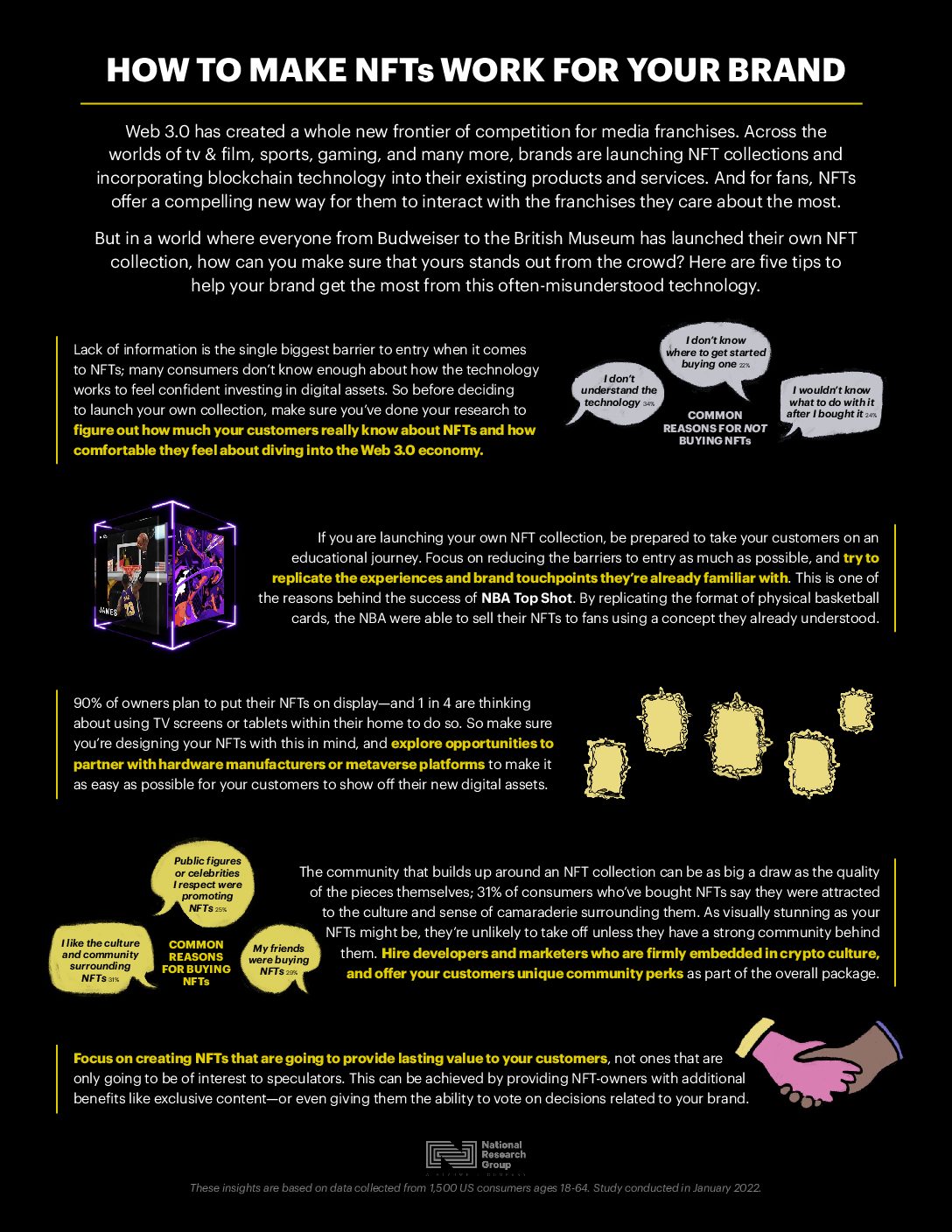CONTACT
hello@stagwellglobal.com
SIGN UP FOR OUR INSIGHTS BLASTS
This piece is part of Stagwell’s Marketing Frontiers series on the Creator Economy, Influencer Marketing, and Social Commerce. To view other content in the series, visit our Creator Economy page here.
As brands explore the Metaverse, expert investment and experimentation with digitally rendered brand ambassadors to follow. When should brands leverage virtual influencers over IRL creators? How can they navigate anxieties around virtual perfectionism, unrealistic beauty standards, and representation as they play in this space? What opportunities do virtual influencers afford that real-life creators may not? We asked influencer and social experts from around Stagwell to share their POVs:
Web3: Enter the Age of Virtual Avatars
Donetta Allen, HUNTER
First, let’s answer the question of “what is a virtual influencer?” A virtual influencer is a fictional, computer-generated personality that acts, speaks, and posts on social media or appears in the Metaverse – like a human, but in a much more controlled way. The tech-savvy, faceless creators and brands behind virtual influencers decide how their avatar will act, dress, who they date, and what drama will – or won’t – appear on the timeline. The ability to work with a fictional character whose every move is controlled by a creator has an appeal for brands in a world full of opinions and photo re-shoots, even in a world where “authentic connection” is often a top reason for marketers to work with influencers.

That said, brands should begin exploring virtual influencers ASAP. Digital avatars are becoming increasingly common as brand partners, with companies like Adidas, Samsung, and Fortnite engaging virtual influencers for recent campaigns. It is expected that the prominence of marketers tapping into the virtual influencer marketplace will increase as the metaverse continues to advance.
Virtual influencers’ carefully curated images allow for greater messaging control, alignment with brand values, and less risk of controversy throughout the duration of the partnership. Like real creators, virtual influencers are diverse – from their ethnicity, gender, size, to interests – and brands should prioritize diversity as they do with real creators. While costly to develop, virtual influencers may be less expensive than traditional influencers to engage for brand campaigns. They are also reported to have 3x the engagement rate of traditional influencers, adding yet another compelling reason to consider virtual influencers for your next campaign. As more brands seek to work with these stylized, fictional characters and new opportunities emerge, we’ll start to see the diversification and expansion of the virtual influencer landscape so that it more closely reflects the human experience.
Virtual Influencers & Transmedia Brand Campaigns
Natalie Goenaga, KWT Global
Digitally-rendered influencers have made a splash on our screens since 2016 when the world was introduced to Lil Miquela. Seemingly appearing out of thin air, Lil Miquela was a thoughtfully curated personification of Instagram and Instagram culture created by a startup in Los Angeles made to “question the social norms of online platforms”- while making the mysterious company millions of dollars in sponsorships. Over the last 6 years, Lil Miquela has amassed a following of over 3 million, participated in campaigns with the likes of Bella Hadid for Calvin Klein, walked with Prada for Milan Fashion Week, modeled for Chanel, Coach, Balenciaga, and named by TIME as one of “The 25 Most Influential people on the Internet.” Did I mention she has a budding career as a pop star with over 198,000 monthly listeners on Spotify?
 As the Metaverse, CGI, and AI continue to creep onto center stage, the rise of these digital influencers is sure to follow. But in a cancel-culture world that holds a magnifying glass to transparency and authenticity from creators and brands how will these perfectly engineered creators navigate the delicate landscape and how can brands appease the masses? In the example of Lil Miquela – it is worth noting that the CGI Brazilian-American 19-year-old has serious activism chops. A vocal ally, she actively supports Black Lives Matter, the Innocence Project, LGBTQ+ Life Center, the Downtown Women’s Center, and Justice for Youth. But is that enough? The digital influencer world is certainly conforming to these changes with perfectly imperfect characters that challenge the beauty industry and their inspiring backstories and diversity to conform to the new mold. And while all creators carefully tread this sensitive landscape, with virtual influencers there is a sense of more control and brand safety and stability as their presence is meticulously and carefully crafted.
As the Metaverse, CGI, and AI continue to creep onto center stage, the rise of these digital influencers is sure to follow. But in a cancel-culture world that holds a magnifying glass to transparency and authenticity from creators and brands how will these perfectly engineered creators navigate the delicate landscape and how can brands appease the masses? In the example of Lil Miquela – it is worth noting that the CGI Brazilian-American 19-year-old has serious activism chops. A vocal ally, she actively supports Black Lives Matter, the Innocence Project, LGBTQ+ Life Center, the Downtown Women’s Center, and Justice for Youth. But is that enough? The digital influencer world is certainly conforming to these changes with perfectly imperfect characters that challenge the beauty industry and their inspiring backstories and diversity to conform to the new mold. And while all creators carefully tread this sensitive landscape, with virtual influencers there is a sense of more control and brand safety and stability as their presence is meticulously and carefully crafted.
As the most active consumers of influencer content, Millennials and Gen-Z want influencers and brands to do one thing well – and that’s to keep it real. With virtual influencers, that’s admittedly a bit harder to do. Balancing the line of when to activate real influencers and those in the digital space is a new tension brands will have to navigate but provides plenty of creative and unique opportunities. Activating virtual influencers for campaigns in an overly saturated influencer market creates thumb-stopping content for those “big splash” moments – like the recent Adidas collaboration with virtual influencer RUBY9100M who designed a custom sneaker for the brand and released her debut single alongside the launch.
Another powerful tool that can be leveraged by digital influencers? Transmedia. This newer storytelling technique can tell a single story or story experience across multiple platforms and formats using today’s current technology. Much like a traditional 360 campaign, transmedia campaigns allow digital influencers to tell your brand’s story and transition it across multiple virtual environments with ease. A virtual influencer will remain recognizable anywhere, so brands can leverage them in a TikTok video, Instagram post, or in a video game. And when it comes to costs, brands are able to activate virtual influencers for larger-than-life ideas that may not be possible with IRL creators without breaking the bank. Want to “fly” your digital creator around the world? Want to launch a campaign with them in space? Virtually anything can become possible.
Virtual or Real, the Strategy is the Same
Kelli Goss Johnson, Allison+Partners
Brands should approach virtual influencers as they would an IRL creator: for authentic brand partnerships, campaigns, awareness and messaging, while ensuring that the brand’s consumers and social audience fully understands that the virtual influencer is exactly that (and not a real human or animal). Virtual influencers can be utilized over IRL creators when the brand wants more control over the content and its many aspects, in addition to creative freedom of the content developed.

Real or not, these influencers should also be ‘on-brand’ and have the same value properties as the brand, while offering loyalty, exclusivity and brand affinity to the partnership or campaign. They are also brand safe (you won’t catch them in an unflattering paparazzi moment or posting something uncomplimentary on social media) and can be activated when, where and how a brand wants them to. And while virtual influencers have been criticized for their perfectionism, so have IRL creators, leaving the door open for virtual influencers to socially share some of their more imperfect moments and make them more relatable or ‘real.’ There is also opportunity to cross both an IRL influencer into the Metaverse with a virtual influencer, supporting the authenticity of the virtual influencer while introducing the IRL influencer into a fully digital ecosystem.
Related
Articles
In the News, Press Releases, Thought Leadership
Oct 30, 2024
77% of CEOs Say the Election Will Impact their 2025 Business Strategy; 85% are Bullish on Investment in the Gulf Region, Reveals Stagwell (STGW) Survey
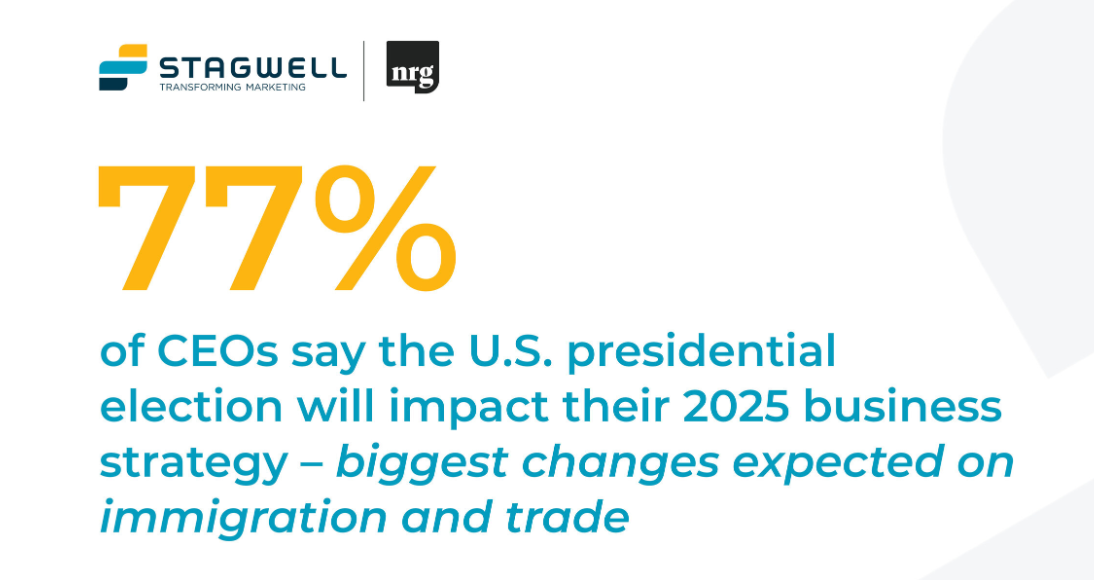
Marketing Frontiers, Thought Leadership
Jul 26, 2024
Game On for In-Game Advertising? Four Things Marketers Should Know About Gaming
It's clear from dozens of Stagwell’s interviews with senior marketers…
Thought Leadership
Jun 28, 2024
Hitting the Mark: Future of News Takeaways from Cannes Lions
Stagwell brought the Future of News to Cannes Lions, where…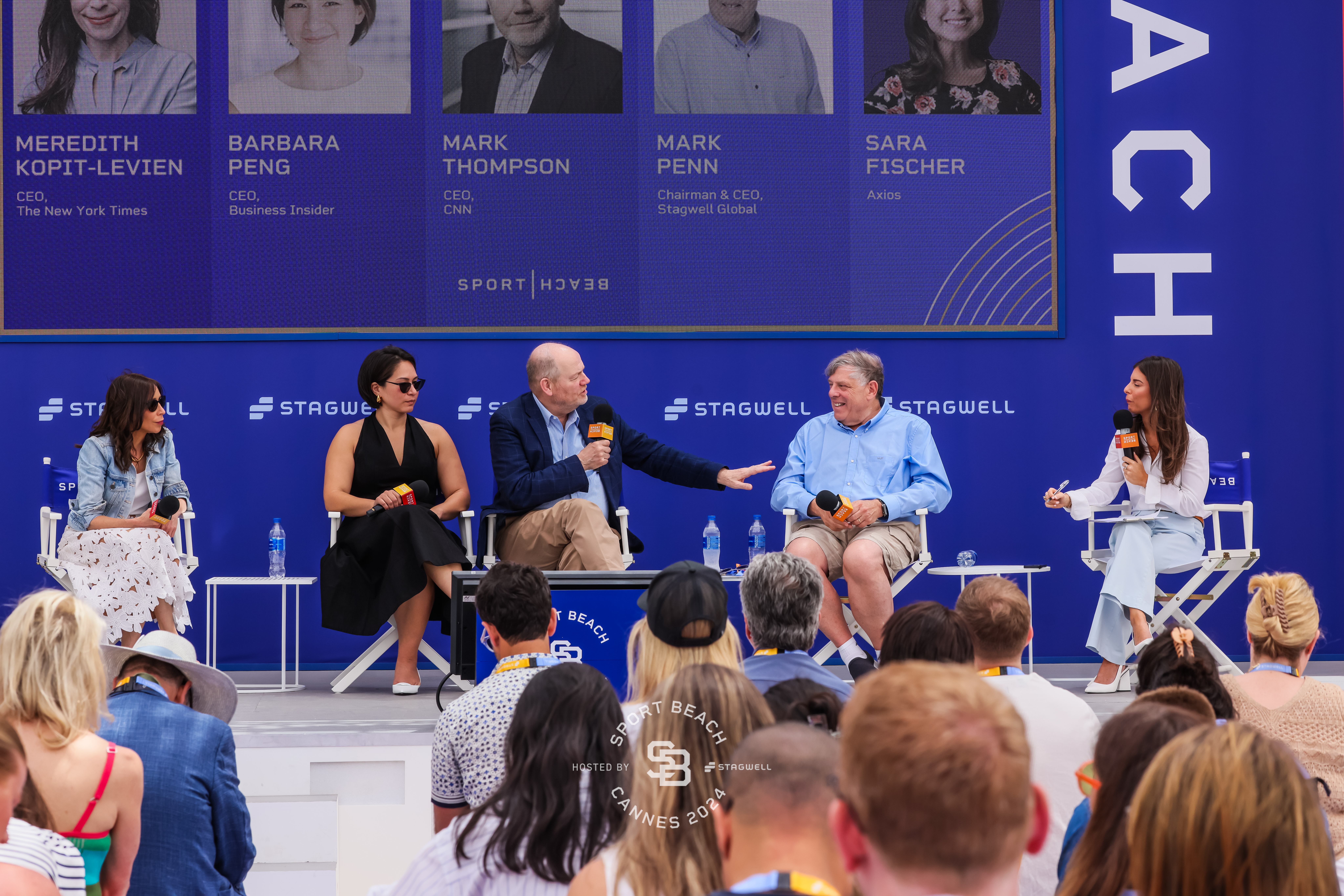
Newsletter
Sign Up
By
Jay Powell
SVP, Communications,
MMI Agency
CONTACT
hello@stagwellglobal.com
SIGN UP FOR OUR INSIGHTS BLASTS
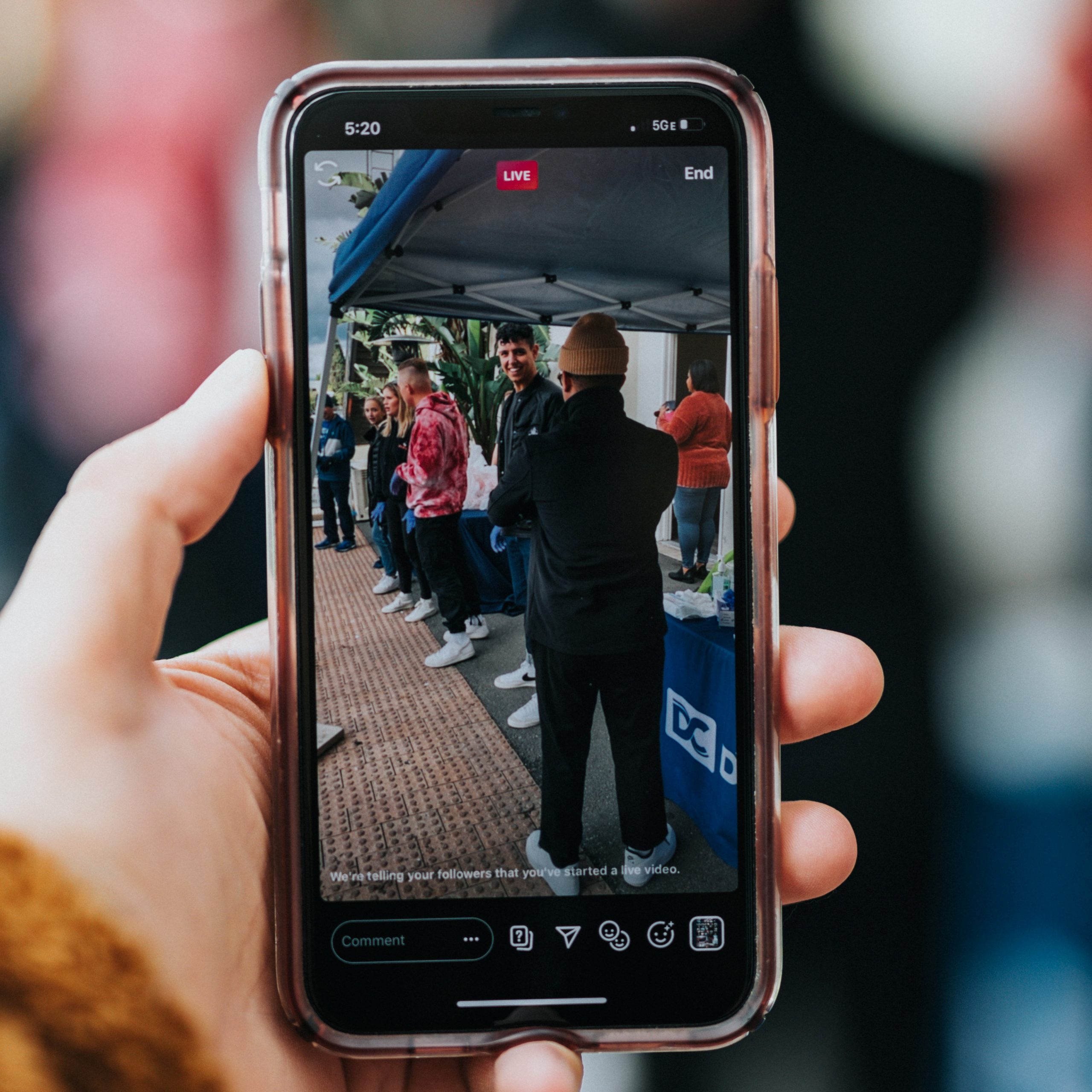
At the height of the COVID-19 pandemic, stay-at-home orders and social distancing drove hordes of Americans to their devices to connect with family and friends. It also helped fuel more online purchases that might typically have been made in-store. Cue the rise of shoppertainment – a phenomenon at the intersection of online shopping and influencer livestreaming that brands are eager to leverage, emboldened by the success live-streamers have found across Asia-Pacific.
As an integrated communications and media firm that has remained at the forefront of marketing innovation since inception, MMI is uniquely qualified to support brands through this latest evolution of commerce. After digging into performance data, examining industry reports, and speaking with brands and influencers, we have compiled a quick start guide to help your brand execute a winning influencer livestream campaign.
Shoppertainment in the digital age is the latest way brands utilize influencers to make the social shopping experience more entertaining and authentic. Shoppertainment rests on influencer livestreaming, which is often less polished than the slickly-produced shorts created by brands and influencers for official campaigns. For leaders worried about brand safety and consistency across platforms, this imperfect content might be troubling. But Caroline Vazzana (@cvazzana), style influencer, says the imperfection of livestreaming is its charm. “The beauty of going live is that not everything needs to be (or can be) perfect!”
At MMI, we love helping brands connect with their target audiences in new ways and across new platforms. If you’re planning to tap into growing trends that can positively impact your bottom line, like livestreaming, our influencer marketing team has the experience to support you..
Livestreams Sell Out the Digital Shelf in China
In 2020, the shoppertainment took off in China; two-thirds of Chinese consumers purchased products via livestreams that year. During Taobao’s 2021 Single’s Day, China’s unofficial shopping holiday that is four times larger than Black Friday in the U.S., China’s two most famous livestreaming stars sold a total of $3 billion worth of products via separate livestreaming sessions. The verticals driving this success in China are cosmetics, beauty products, fashion, and food.
Influencer livestreaming is gaining traction, as evidenced by increasing viewership and conversion rates. Per Bloomberg, social commerce is expected to accelerate over the next few years, with U.S. sales reaching $1.2 trillion by 2025.
Instagram and TikTok Take Center Stage
Initially a photography-focused app, Instagram now prioritizes video content to keep up with its competitors, most recently with the introduction of Instagram Live Shopping. MMI facilitated a collaboration between a large skin care brand and beauty and lifestyle influencers Paola Matute (@paox33) and Melody Acevedo (@melodyslife) to promote holiday season self-care products via Instagram Live. 44% of Instagram users shop Lives weekly, making them an effective way to place your product directly in front of consumers.
Brands are also finding success on “the QVC for Gen Z,” TikTok Live, whose “Top LIVEs” category makes it easy for live content to be discovered by users on the platform. MMI executed a TikTok Live on behalf of a major hair care brand, hosted by Vazzana, to promote an innovative new hair styling product line. Viewers chatted with Caroline during the session and posed questions that she answered live, creating an interactive environment for viewers. Click-through rate to the brand’s product page exceeded campaign expectations.
Influencers can seamlessly livestream beyond social channels via a brand’s website by incorporating livestream shopping platforms like buywith and talkshoplive. This allows the audience to shop directly on the e-commerce site, along with the influencer, in real time, removing path-to-purchase friction, increasing engagement and boosting conversions. Large brands and publishers who are already livestreaming shoppable content across these platforms include Walmart, Buzzfeed and Hearst.
Best Practices for Lively Livestreaming
The world of influencer livestreaming can be daunting to brands that are accustomed to controlling every aspect of influencer content development. MMI’s philosophy for content creation is to give influencers “freedom within a framework” to do what they do best and create content they know their followers will engage. MMI compiled this list of tips to consider as you craft your influencer livestreaming strategy.
Go with the platform where your audience spends the most time..
Meet your audience where it’s already engaged to maximize the reach and life cycle of your content.
Go with someone your audience trusts.
87% of Instagram users say influencers have inspired them to make a purchase. Collaborate with an influencer your audience already looks to for advice to drive conversions.
Go with someone you trust.
Identify creators you’ve worked with in the past who will understand the nuances of your brand as well as the required FTC and platform-specific disclosure policies.
Go with the content format your audience engages with most.
Examine past organic social and influencer campaign performance to determine the content type(s) with which your audience is more likely to interact.
Go with the platform where your audience spends the most time..
Meet your audience where it’s already engaged to maximize the reach and life cycle of your content.
Livestreaming, shoppertainment, and social commerce are new domains for today’s brands. To drive results, they will need to get comfortable with leaning on influencers and ceding creative control where necessary. We’ve found, though, that the best collaborations occur when influencers are given the freedom to create what works for their audiences. Acevedo affirms that the resulting livestream “feels authentic, yet informative for the audience.” When you’re ready to see influencer livestreaming work magic for your brand, MMI’s influencer marketing team is here to support you every step of the way.
See how MMI helps brands break through the noise and stand out here.
MMI Agency is a modern brand lab where performance meets possibility. Our mission is to inspire action by combining our end-to-end approach to reaching consumers with our tenacity for data.
Related
Articles
In the News, Press Releases, Thought Leadership
Oct 30, 2024
77% of CEOs Say the Election Will Impact their 2025 Business Strategy; 85% are Bullish on Investment in the Gulf Region, Reveals Stagwell (STGW) Survey

Marketing Frontiers, Thought Leadership
Jul 26, 2024
Game On for In-Game Advertising? Four Things Marketers Should Know About Gaming
It's clear from dozens of Stagwell’s interviews with senior marketers…
Thought Leadership
Jun 28, 2024
Hitting the Mark: Future of News Takeaways from Cannes Lions
Stagwell brought the Future of News to Cannes Lions, where…
Newsletter
Sign Up
By
Kaitlyn Schembri
Contributor, Koalifyed
CONTACT
hello@stagwellglobal.com
SIGN UP FOR OUR INSIGHTS BLASTS
With the advent of social commerce, influencers have never been more important. Global sales driven by social commerce will triple to $1.2 trillion by 2025. At the same time, user-generated content is on the rise, accounting for 39% of weekly media hours consumed by Americans. We’re living in the age of nano-influence, driven by the professionalization of the Creator Economy and brand investments in social commerce.
In the old days of influencer marketing, celebrity partnerships were strong drivers of top-of-funnel marketing. A-listers like Betty White gave brands wide-ranging exposure. No wonder brands lead with celebrities at the Super Bowl; on a stage with a hefty price tag, leveraging talent with a built-in fan base makes sense. Salesforce’s recent Big Game ad with Matthew McConaughey was a memorable callback to his 2014 hit “Interstellar.” It likely did little to drive conversion when it aired but drove conversation for days afterward.
With the rise of social commerce and performance measurement, creators boast an enviable position in today’s brand marketing playbook. In-app social marketplaces that let consumers shop the entire funnel on Instagram and TikTok mean the power of a single influencer post holds more weight than ever before. Consumers no longer need to see your website to make a sale – and it’s likely they don’t want to!
Nano-influencers are today’s driver of commerce. TikTok, more than any other platform, is driving this trend. Over the past two years, TikTok has democratized the digital world, allowing creators to reach a large audience on the app without a substantial following (and, in some cases, hardly any following at all). The algorithm prizes discovery over drudgery, priming niche content and creators with fewer than 10K followers to capture eyeballs (and results).

In this landscape, nano influencers are an authentic way for brands to connect with consumers. Frequently the tastemakers and thought leaders of their niche communities, they command the respect of small but mighty followings. Consumers are more likely to view them as friends than other-worldly celebrities, adding trust and engagement. Studies have shown that while 3% of consumers would consider buying a product in-store if promoted by a celebrity, that number jumps to 60% for a nano-influencer.
Dunkin’ recently tapped into various influencers with fewer than 50,000 followers to power its latest “coffee-first” campaign. Analysis showed nano-influencers generated higher engagement rates, with an average engagement rate of 5.2%. Dunkin’ succeeded in organically growing a support base for its coffee ambitions.
Nano influencers also can help brands drive a positive impact on diversity & inclusion. Being purposeful in curating your influencer marketing partnerships can ensure your brand does its part in platforming diverse perspectives. Consider how nano-influencers from yet-unengaged segments might supplement your core marketing activities for major product launches. Launching a new foldable exercise bike for the WFH generation? Consider partnering with TikTok influencers who produce content on career acceleration for P.O.C. talent. You never know what content may come of the effort!
As nano influencers proliferate marketing campaigns, it’s critical brands have agile, scalable solutions for influencer marketing management. Creators should be natural extensions of the marketing team. Investing in the right tech to reach, negotiate, and communicate with them is essential for success in this era of super-charged social commerce.
When leveraging the power of nano influencers, do not overlook the vetting process. Brand safety controls are key in the wild west of today’s platform-fragmented internet, as is closely managing influencer spending. Many marketers fall prey to the hidden costs of fake follower bots on their influencer efforts, which threaten to diminish a campaign’s chances of success and harm trusted influencer relationships. Bot detection is vital to ensuring brands are getting the complete picture. At Koalifyed, we leverage our platform’s built-in S.N.I.F.F. technology to help brands reach a higher R.O.I. for their influencer marketing investments.
We hear success stories every day from brands utilizing nano-influencers to hit their marketing KPIs. We predict the gap between the brands who invest in this strategy versus those who don’t will only widen in the coming years as platforms double-down on social commerce development and authentic brand marketing remains a priority for consumers.
Related
Articles
In the News, Press Releases, Thought Leadership
Oct 30, 2024
77% of CEOs Say the Election Will Impact their 2025 Business Strategy; 85% are Bullish on Investment in the Gulf Region, Reveals Stagwell (STGW) Survey

Marketing Frontiers, Thought Leadership
Jul 26, 2024
Game On for In-Game Advertising? Four Things Marketers Should Know About Gaming
It's clear from dozens of Stagwell’s interviews with senior marketers…
Thought Leadership
Jun 28, 2024
Hitting the Mark: Future of News Takeaways from Cannes Lions
Stagwell brought the Future of News to Cannes Lions, where…
Newsletter
Sign Up
BY
Christine McDermott
VP, Veritas/Meat & Produce
CONTACT
hello@stagwellglobal.com
SIGN UP FOR OUR INSIGHTS BLASTS
This piece is part of series on Social Commerce, Influencer Marketing, and the Creator Economy.

A decade ago, brands looked to influencer agencies to connect with the ‘who’s who’; today, they come to us to wield the transformative power of social influence through their entire marketing stack. As part of the agency that felt so strongly about the term “influencing the influencers” that we trademarked it, I am keenly aware that influencer marketing long predates the current hype that social media has generated around the industry. When we look at the prioritization of influencer marketing in today’s marketing mix, it’s no longer considered a nice to have but rather a core component of brand planning.
It wasn’t always this way, though. This has provided a fascinating opportunity to watch the shift in the marketplace from a client service perspective. In today’s creator-centric economy, brands require influencer marketing agency partners to keep apace the transformation in this space.
From Impressions to Engagement
In the days of blogs and burgeoning social media channels, the most significant opportunity influencers afforded was the chance to reach new audiences. The focus was almost exclusively on maximizing the number of impressions from influencer content. Guaranteed organic reach and high blog readership provided cost-effective ways for brands to reach audiences that otherwise may never have interacted with them. The deep relationships that influencer marketing agencies held with influencers were critical to obtaining the best earned and paid opportunities for our brand partners and allowed for agility in influencer placements.
As social channels moved into the spotlight, accounting for more media hours consumed across generations, the focus shifted to engagement. The goal was to measure the attention content could generate through authentic connection with audiences in an increasingly competitive digital world. With this, we saw the rise of micro and nano influencers who built strong relationships through two-way communication with their audiences, maintaining consistently high engagement. Trusted recommendations from the right influencers could bring your brand into the consideration set for your target audience. Dedicated audiences of nano influencers also provided an opportunity to access niche consumer segments that otherwise would be challenging for brands to find. Our key to success was pairing the right influencers with our brands, ensuring alignment on values and demographics.
The Creator Economy
Today, getting the right message to the right person at the right time has never been more critical – or more difficult as the consumer ecosystem becomes increasingly sophisticated. New channels and content formats provide evermore opportunities to attract and engage new and existing audiences with relevant content. Moving influencer marketing from a single tactic to a full-funnel approach creates a new world of opportunity for brands, while at the same time raising countless new considerations. With all these factors to contend with, the role influencer marketing agencies take on has never been more critical. Today’s influencer marketing agency partners must help clients navigate this ever-changing world by:
- Going beyond the numbers: As data-driven marketers, it can be attractive to make decisions based solely on the immense data we now have at our fingertips. While these are fundamental parts of our discovery and vetting processes, we believe it’s equally important to review the qualitative elements of an influencer agreement: alignment with brand values, the types of social conversations creators drive among their followings, and, importantly, any content or connections that may increase brand risk.
- Capitalizing on available technology: Today’s digital tools provide capabilities that aid every step of the process: diving deep into audience demographics, reviewing years of content to ensure brand safety, authenticating audiences to remove bot traffic, and analyzing results. The available options can also be overwhelming. Here, the right mix of talent (agency experts with a deep understanding of the landscape) with technology (digital SaaS and DaaS tools) can supercharge campaign results.
- Keeping human connection at the center: True influence is built on strong connections between agencies and influencers and influencers and their audiences. Authentic connection is essential, from the relationships we build to the content we create.
- Letting creators be creative: Our influencers are partners in the creative process, not simply another outlet or a channel to distribute brand messages. Influencers know their audiences better than anyone. Leaning into their insights and creativity will lead to more authentic content and experiences that resonate. True partnerships with influencers allow for co-creation and collaborations that can excite and convert.
- Researching and reviewing: Due to the steady growth of influencer marketing, we now have a wealth of research to help inform and guide everything from partnership models to accurate approaches for optimizing reach. Every campaign is an opportunity to test, learn, and then review performance to better optimize results in the future.
There has been a tremendous acceleration in influencer marketing growth and investment. When done well, it works. When we examine the transformation of influencer marketing and the creator economy in just a few short years, it becomes clear that more evolution is to come. Leaning on agency partners with deep knowledge of the discipline, facility with the technology tools driving efficiency through the space, and authentic relationships with influencers will help brands get the most out of this fast-moving space.
Related
Articles
In the News, Press Releases, Thought Leadership
Oct 30, 2024
77% of CEOs Say the Election Will Impact their 2025 Business Strategy; 85% are Bullish on Investment in the Gulf Region, Reveals Stagwell (STGW) Survey

Marketing Frontiers, Thought Leadership
Jul 26, 2024
Game On for In-Game Advertising? Four Things Marketers Should Know About Gaming
It's clear from dozens of Stagwell’s interviews with senior marketers…
Thought Leadership
Jun 28, 2024
Hitting the Mark: Future of News Takeaways from Cannes Lions
Stagwell brought the Future of News to Cannes Lions, where…
Newsletter
Sign Up
CONTACT
SIGN UP FOR OUR INSIGHTS BLASTS

Related
Articles
In the News, Press Releases, Thought Leadership
Oct 30, 2024
77% of CEOs Say the Election Will Impact their 2025 Business Strategy; 85% are Bullish on Investment in the Gulf Region, Reveals Stagwell (STGW) Survey

Marketing Frontiers, Thought Leadership
Jul 26, 2024
Game On for In-Game Advertising? Four Things Marketers Should Know About Gaming
It's clear from dozens of Stagwell’s interviews with senior marketers…
Thought Leadership
Jun 28, 2024
Hitting the Mark: Future of News Takeaways from Cannes Lions
Stagwell brought the Future of News to Cannes Lions, where…
Newsletter
Sign Up
CONTACT
hello@stagwellglobal.com
SIGN UP FOR OUR INSIGHTS BLASTS
Amid the global consumer craving for new experiences driven by the pandemic, social audio bloomed in popularity through 2020 and 2021. A year later, some of the buzz around the platform driving the trend – Clubhouse – has fizzled, but experiments in the space from key social platforms like Twitter and Reddit, and audio superstar Spotify, show there’s still terrain to be mapped. But are consumers into social audio? What opportunities does the content create? And what are the barriers to widespread adoption and growth that brands should be on the lookout for? Stagwell’s experts from KWT Global, HUNTER, and Meat & Produce address where social audio is headed in 2022.
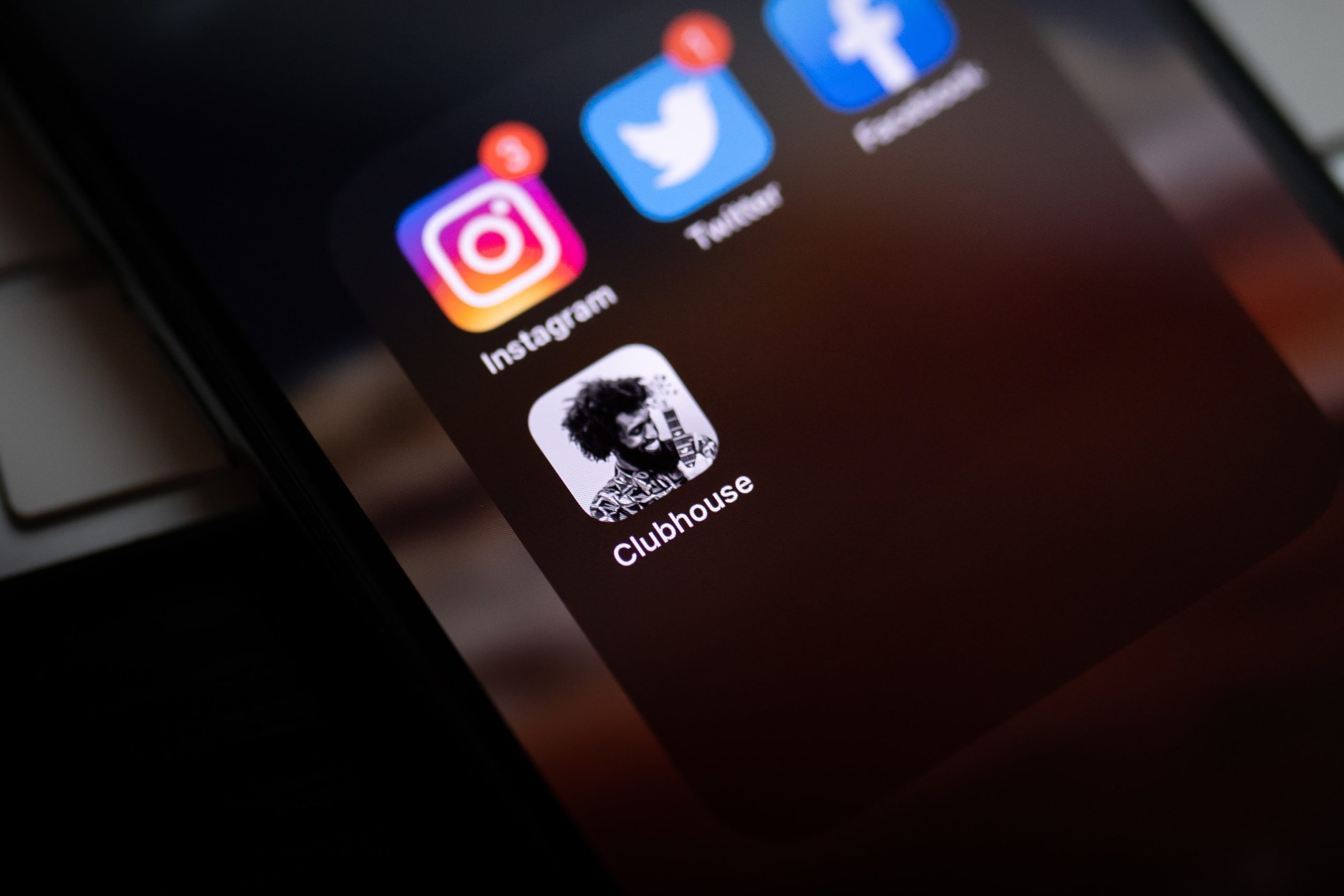
Niche Will Drive the Social Audio Experience
Jessica Spar, SVP, Digital, KWT Global
Social audio isn’t going anywhere any time soon, but the bigger questions are: Who is tuned in? And where? Clubhouse was meant to be the next big thing, but its fifteen minutes of fame have passed. Was this because the format didn’t ultimately have long term potential? Or because it was a good idea with poor execution? Twitter Spaces seems to be banking on the latter, yet with significant shifts in the cultural and social landscape over the last few years, Twitter may not be primed for the success it expects.
 Twitter is counting on mass appeal for Twitter Spaces based on its 300 million+ monthly users. However, the masses are moving in a different direction – younger audiences are increasingly leaning into Instagram and TikTok as their platforms of choice, with video as the dominating medium. Social audio has a completely different definition on these platforms. Where Clubhouse and Twitter Spaces focus on live conversation, TikTok and Instagram’s definition of social audio includes everything from audio remixes to sharing the latest sound trends, which doesn’t require the same level of focus, attention, and participation as the live conversational formats of Clubhouses and Twitter Spaces.
Twitter is counting on mass appeal for Twitter Spaces based on its 300 million+ monthly users. However, the masses are moving in a different direction – younger audiences are increasingly leaning into Instagram and TikTok as their platforms of choice, with video as the dominating medium. Social audio has a completely different definition on these platforms. Where Clubhouse and Twitter Spaces focus on live conversation, TikTok and Instagram’s definition of social audio includes everything from audio remixes to sharing the latest sound trends, which doesn’t require the same level of focus, attention, and participation as the live conversational formats of Clubhouses and Twitter Spaces.
To succeed, Twitter Spaces will need to rely on highly engaged niche interest groups, which is a model already owned by Reddit. As a platform founded on niche interest groups, Reddit is now throwing its hat into the social audio ring as well with Reddit Talk. Reddit could succeed where Clubhouse failed (and Twitter Spaces seems to be failing), as they have the framework for success built into their platform already. The platform’s subreddit model and moderation policies lend themselves well to a similar setup for live audio discussion. Clubhouse, on the other hand, was still working through the right setup for rooms when users started to lose interest, and Twitter’s struggles have come in on the moderation side of things. Without clear moderation frameworks, brands may find social audio experiences too risky.
All to say, no clear winner has emerged in the social audio game when it comes to live conversation, so it will be interesting to see which platform, if any, can get it right!
Platform Investment Means Social Audio is Here to Stay
Michael Lamp, Chief Digital Officer, HUNTER
Despite Clubhouse’s fizzle-out, there’s still a ton of heat around social audio. Twitter Spaces has outpaced all its other recent innovations and is driving a lot of thumb-stopping based on the way live Spaces appear in the mobile app (à la IG Stories…just begging to be clicked). Spotify launched its version of audio rooms – Greenroom – in July of 2021 and Facebook continues to promote its Live Audio Rooms with select Creator partners.
 Perhaps most indicative of Social Audio’s staying power, though, is Reddit’s offering: Reddit Talk. A mobile-only product for a while, it rolled out to the web version just this year, adding several new features, including the ability to listen to recorded sessions.
Perhaps most indicative of Social Audio’s staying power, though, is Reddit’s offering: Reddit Talk. A mobile-only product for a while, it rolled out to the web version just this year, adding several new features, including the ability to listen to recorded sessions.
Beyond these specific products offered by existing platforms, the broader trend of sensorial social is what we’re watching, buoyed by the staying power of podcasts, ASMR and long-form, audio-as-video content. From sight to sound to virtual realities in the metaverse simulating touch, where will the fight for consumer attention take us next?
Content Creators Hold the Key for the Future of Social Audio
Christine McDermott, VP, Meat & Produce
Amidst the “we’re all in this together” enthusiasm of 2020 (remember after work Zoom drinks? Yea, sorry to remind you…) friends, families and companies jumped into the online world headfirst. The need for connection, exacerbated by the pandemic, was real but screen fatigue quickly set in. This combination created a gateway for an explosion of audio content. While it appeared to have been spurred on by our “unprecedented times,” the audio movement had been building for years with the groundwork laid by the increasing popularity of podcasts.
 This brings us back to Clubhouse: despite downloads having plummeted after the initial hype, every major social platform has continued to invest in the development of audio. Think Twitter Spaces, Facebook Live Rooms and Spotify Greenroom. Notably, the names of these efforts focus on referencing physical locations, highlighting the opportunity audio provides for greater connection and inclusion across hybrid brand ecosystems. Even LinkedIn has recently jumped on the bandwagon, extending their live events to include audio-only events. Audio-only can level a playing field in terms of providing engagement opportunities without judgment on appearance or location (i.e. no need for staged Zoom backgrounds…)
This brings us back to Clubhouse: despite downloads having plummeted after the initial hype, every major social platform has continued to invest in the development of audio. Think Twitter Spaces, Facebook Live Rooms and Spotify Greenroom. Notably, the names of these efforts focus on referencing physical locations, highlighting the opportunity audio provides for greater connection and inclusion across hybrid brand ecosystems. Even LinkedIn has recently jumped on the bandwagon, extending their live events to include audio-only events. Audio-only can level a playing field in terms of providing engagement opportunities without judgment on appearance or location (i.e. no need for staged Zoom backgrounds…)
No social form of social media is an island, or could possibly exist in isolation, and thus the popularity of audio has bloomed beyond audio-only channels. For years, the advice brands and agencies heard from Facebook was to design content for sound-off as well as sound-on. This was based on the insight that most users would consume content while silently scrolling through feeds. Now users discover cultural moments by tapping into trending audio on TikTok; the audio content drives the cultural relevance consumers are seeking in their entertainment consumption.
The key to the future of audio lies in the hands of creators, both from a platform and consumer perspective. The possibilities here are immense: since it is more cost effective to create high-quality audio than video, audio’s proliferation will enable new and underrepresented voices to enter the mainstream. Additionally, audio content and interactions allow for deeper discussions around key issues we face today while simultaneously enabling a greater level of empathy to be built between listeners. Imagine the nuance that voice provides enhancing conversation and discourse, as opposed to the impersonal, text-based comment battles we see across social media so often. Through strategic creator partnerships, our brands can find authentic ways to enter the conversations that are matter to their consumers.
With the ongoing evolutions we are seeing in this space – from increasing formats and channels to greater accessibility options – audio will continue to play a more important role in our social mix, from channel planning to creative development.
Related
Articles
In the News, Press Releases, Thought Leadership
Oct 30, 2024
77% of CEOs Say the Election Will Impact their 2025 Business Strategy; 85% are Bullish on Investment in the Gulf Region, Reveals Stagwell (STGW) Survey

Marketing Frontiers, Thought Leadership
Jul 26, 2024
Game On for In-Game Advertising? Four Things Marketers Should Know About Gaming
It's clear from dozens of Stagwell’s interviews with senior marketers…
Thought Leadership
Jun 28, 2024
Hitting the Mark: Future of News Takeaways from Cannes Lions
Stagwell brought the Future of News to Cannes Lions, where…
Newsletter
Sign Up
By Fergus Navaratnam-Blair and Keith Wagstaff, National Research Group
CONTACT
hello@stagwellglobal.com
SIGN UP FOR OUR INSIGHTS BLASTS
Marketing Frontiers is a new series from Stagwell exploring the methods, mediums, and messes modern marketers will grapple with over the next decade as they chart transformation in the discipline. This March, Stagwell is exploring Audio.
TL;DR:
Consumers desire a single platform to satisfy all their listening needs, making the audio streaming wars a hotter competition for attention than video and TV.
The success of global entertainment content in recent years presents a clear opportunity for content development in audio.
Audio streaming is still a nascent space – so prioritize identifying early gaps or “deserts” that can become substantial growth opportunities
The audio streaming wars have been back in the spotlight in recent weeks following a high-profile boycott of Spotify launched by rock legend Neil Young in protest over COVID misinformation on the platform. Across social media, there has been fierce debate about how much responsibility streaming services should take for the content they host—and what ethical and financial obligations these platforms have to the creators who depend on them.
There’s a reason that these debates attract so much media and consumer interest. It’s becoming increasingly clear that the audio wars are a zero-sum game—much more so than TV and film. As a result, it’s impossible to separate the fate of giants like Spotify from the fate of the audio streaming industry at large.
Why is it zero-sum game?
Unlike video streaming, where the average consumer has a subscription to five different services, 83% of Americans prefer to turn to a single audio app to satisfy all their listening needs. And 86% of consumers say that they’re unlikely to start paying for a new audio streaming service within the next six months.
The barriers to entry in this market are exceptionally high. Most consumers simply aren’t willing to use multiple services to track down all the music and podcasts they want to listen to. And once they’ve found a service they like, they’re unlikely to jump ship—especially since doing so usually means abandoning the playlists they’ve lovingly curated over time.
So, what can brands do to attract new users with audio content such a cut-throat and competitive environment? Here are three recommendations from our research:
Find ways to make your users feel closer to the creators they love
Consumers don’t want to be passive listeners anymore; they want to immerse themselves in the creator economy and feel like part of an active, thriving community. 69% of listeners say that they want to do more to support their favorite creators—for example, by buying merch, attending live events, or engaging in micro-payments. And two thirds of them are interested in one day learning how to create audio content themselves.
Focus on creating a truly global content library
The success of overseas streaming content like Squid Game and Money Heist demonstrates that Americans are increasingly willing to engage with media from outside their own country. And the data suggests that this is just as true for audio content. 7 in 10 Gen Zs and Millennials use podcasts as a way of virtually travelling to new places and hearing new perspectives, and 42% of consumers say they’ve started listening to cross-cultural podcasts within the past year.
Identify “audio deserts” and create content to fill those gaps
Despite the boom in audio content over the last few years, not all audiences have been equally well-served by the content on offer. For example, Black and low-income consumers are more likely than other groups to say that they’re not interested in the audio content currently available on the market. Identifying and targeting these audiences that have, so far, been left behind by the streaming boom can help your platform create a resilient niche for itself. And as evidenced by the strong mix of more diverse content dominating the entertainment wars on social and streaming properties, engaging with these audiences can be great for driving growth.
For more on the listening habits of consumers, and what they mean for streaming services, see our full report: Welcome to the Future of Digital Audio.
Related
Articles
In the News, Press Releases, Thought Leadership
Oct 30, 2024
77% of CEOs Say the Election Will Impact their 2025 Business Strategy; 85% are Bullish on Investment in the Gulf Region, Reveals Stagwell (STGW) Survey

Marketing Frontiers, Thought Leadership
Jul 26, 2024
Game On for In-Game Advertising? Four Things Marketers Should Know About Gaming
It's clear from dozens of Stagwell’s interviews with senior marketers…
Thought Leadership
Jun 28, 2024
Hitting the Mark: Future of News Takeaways from Cannes Lions
Stagwell brought the Future of News to Cannes Lions, where…
Newsletter
Sign Up
Related
Articles
In the News, Press Releases, Thought Leadership
Oct 30, 2024
77% of CEOs Say the Election Will Impact their 2025 Business Strategy; 85% are Bullish on Investment in the Gulf Region, Reveals Stagwell (STGW) Survey

Marketing Frontiers, Thought Leadership
Jul 26, 2024
Game On for In-Game Advertising? Four Things Marketers Should Know About Gaming
It's clear from dozens of Stagwell’s interviews with senior marketers…
Thought Leadership
Jun 28, 2024
Hitting the Mark: Future of News Takeaways from Cannes Lions
Stagwell brought the Future of News to Cannes Lions, where…
Newsletter
Sign Up
By Lisa Rosenberg, Partner + President, Consumer Brands at Allison+Partners
CONTACT
hello@stagwellglobal.com
SIGN UP FOR OUR INSIGHTS BLASTS
Marketing Frontiers is a new series from Stagwell exploring the methods, mediums, and messes modern marketers will grapple with over the next decade as they chart transformation in the discipline. This February, Stagwell is exploring NFTs.
Virtual worlds are on the rise – and the time people spend in them is only going to increase. With popular artists such as Justin Bieber, Travis Scott and Ariana Grande having already performed in the metaverse, brands know that the future is virtual and that the possibilities of marketing in the metaverse are seemingly endless. In the last few months, we’ve seen an explosion of brands using NFTs to connect with and engage their consumers.

As AOR for Budweiser, Allison+Partners supported the brand’s entry into the metaverse with the launch of the Budverse Heritage Collection on Cyber Monday 2021. The brand’s first-ever NFTs are a curated set of unique digital cans representing 1936, the year the first Budweiser can was created. This launch marked the brand’s first foray into the world of unique digital assets on the blockchain and represented Anheuser-Busch InBev’s first owned NFT marketplace, Budwesier.com/NFT. Each Heritage Collection token is a one-of-a-kind digital asset generated using designs from throughout Budweiser’s history and was available to consumers of legal drinking age via two different token types at launch – Core Heritage Cans and Gold Heritage Cans. The Gold Heritage Cans are rarer, with only 36 in existence and included access to and/or exclusives for future Budweiser in-person events and early access to future brand NFT launches. There were 1900 Core Heritage cans released.
The launch was incredibly successful, with the collection selling out within an hour, a fact the team quickly added to media follow ups, with efforts resulting in 243 million impressions, including coverage in Entrepreneur, Decrypt, and multiple stories in AdAge.
For an iconic brand like Budweiser, there are numerous benefits to being seen as an early adopter in this space. The brand has been a major influencer and contributor in sports and entertainment and NFTs represent the future of where consumers are going to socialize and be entertained. In addition, NFT marketplaces enable Budweiser to provide consumers with a richer and deeper brand experience, leveraging technology for increased engagement.
Late last month, the A+P team supported the brand’s release of its second NFT collection, The Budweiser Royalty Collection, which also quickly sold out. The brand partnered with 22 of the world’s top emerging music artists to drop their first-ever NFTs and provide them with a global platform they might not have access to otherwise. The drop also allowed fans the opportunity to support artists directly and potentially unlock exclusive experiences with them. Through the Budweiser Royalty Collection, Budweiser continues to give local artists a global platform and support their journey towards becoming the next Kings and Queens of the music industry. Coverage resulted in 144 million impressions and included stories in Benzinga, Medium, INSIDER and many more.
Earned coverage of Budweiser’s entry into NFTs successfully positioned the brand as an innovative leader in the space and demonstrated how AB InBev is leveraging technology to engage brand fans in an entirely new way. Both the Budverse Heritage Collection and the Budweiser Royalty Collection offered consumers the ability to collect and own a digital piece of the Budweiser brand, as well as gain exclusive access to brand experiences.
Related
Articles
In the News, Press Releases, Thought Leadership
Oct 30, 2024
77% of CEOs Say the Election Will Impact their 2025 Business Strategy; 85% are Bullish on Investment in the Gulf Region, Reveals Stagwell (STGW) Survey

Marketing Frontiers, Thought Leadership
Jul 26, 2024
Game On for In-Game Advertising? Four Things Marketers Should Know About Gaming
It's clear from dozens of Stagwell’s interviews with senior marketers…
Thought Leadership
Jun 28, 2024
Hitting the Mark: Future of News Takeaways from Cannes Lions
Stagwell brought the Future of News to Cannes Lions, where…
Newsletter
Sign Up
By Will Johnson, CEO, Harris Poll
and Scott Weintraub, VP of Brand Growth, R&CPMK
CONTACT
hello@stagwellglobal.com
SIGN UP FOR OUR INSIGHTS BLASTS
Everyone is trying to figure out what to do about non-fungible tokens (NFTs). These modern tools, born out of the crypto boom, have been viewed as both a passing fad and a future tool for artistic compensation.
Recent research from The Harris Poll and R&CPMK found that about half of consumers familiar with NFTs (47%) are interested in brands offering them as a commercial product, providing new use cases for brand marketers to capitalize on the hyper-relevant digital tokens that occupy so much consumer mindshare. When leveraged correctly, NFTs offer several applications for driving increased revenue and awareness around brand products:
1. NFTs as an incentive for a larger purchase.
Big-ticket items such as festival tickets, cars or trips can make most consumers hit pause and consider purchases. Unlike impulse buys – such as food, beverage or CPG products – these larger ticket items often require repeated exposures to creative campaigns or an extra incentive to push consumers over the line on a purchase.
Our research indicates that NFTs could offer marketers another tool for pushing customers through the funnel, with 30% of Americans stating they would like to receive an NFT as a gift with a purchase.
Indeed, the possibility of attaching an NFT to a purchase teases several value creation possibilities for brand marketers. For live events or travel, an expiring NFT offer could provide a sense of urgency to the purchase as an added incentive to buy now. NFTs could also offer a a seal of authenticity. For example, luxury brands such as Gucci are experimenting with NFTs tied to the purchase of their products. The NFT in this case serves as a luxury indicator, marking the occasion of the purchase and proving the authenticity of the brand to others or third-party buyers.
Whether driving immediacy for an upcoming purchase or as an addendum to prove the authenticity of a luxury item, incentive-based NFTs provide marketers innovative ways to leverage this new technology. By tying a unique token to a physical product or experience, it marks that purchase as special. And the specialized, unique value of NFTs can boost sales, create differentiation and ultimately increase the perceived consumer value of a product.
2. NFTs as commemorative memorabilia to deepen consumer connections
Much like apparel, figurines or trinkets, an NFT represents a myriad of options for marketers looking to create unique, commemorative items for specific events. Instead of tying an NFT to a purchase, marketers can use NFTs as a subsequent item to deepen consumer connection within a marketable moment in time as a token of appreciation.
3. NFTs as additional revenue streams
Related
Articles
In the News, Press Releases, Thought Leadership
Oct 30, 2024
77% of CEOs Say the Election Will Impact their 2025 Business Strategy; 85% are Bullish on Investment in the Gulf Region, Reveals Stagwell (STGW) Survey

Marketing Frontiers, Thought Leadership
Jul 26, 2024
Game On for In-Game Advertising? Four Things Marketers Should Know About Gaming
It's clear from dozens of Stagwell’s interviews with senior marketers…
Thought Leadership
Jun 28, 2024
Hitting the Mark: Future of News Takeaways from Cannes Lions
Stagwell brought the Future of News to Cannes Lions, where…

